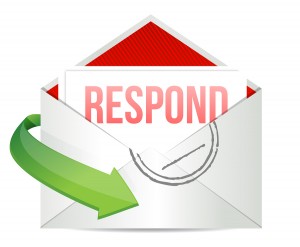 Direct response is a powerful marketing discipline that brings measurable results and accountability to your advertising and marketing.
Direct response is a powerful marketing discipline that brings measurable results and accountability to your advertising and marketing.
What’s not to like about that?
So why don’t more marketers use it in their advertising?
More to the point, why don’t more clients insist on it?
I have been puzzled by this for years. I’ve always understood why ad agencies don’t push direct response. It’s completely measurable and accountable – and what ad agency wants that?
But why don’t clients ask for it? It’s their money.
We know advertising managers expect to see measurable results from their direct mail. We know they monitor their online marketing activities for open rates, click-through rates and conversion rates.
But ask them about their print ads, radio ads or TV commercials, and they will usually tell you their advertising is designed to build awareness, not to generate response.
Why not?
Shouldn’t your advertising also generate results in the form of leads, customers or store traffic?
I know this is a difficult sell to major consumer brand advertisers – the companies selling automobiles, beer, soda, food and household items. Their business models and distribution systems are not set up to deal with one-to-one marketing.
But there are so many more businesses that could easily make the shift – and start seeing some results from their advertising investment.
And this should really hit home for those business-to-business advertisers that continue to advertise in business magazines and industry trade journals. For them, direct response should be an easy decision.
I know I’m biased, but I just don’t understand why these clients are still so accepting of brand awareness advertising.
But I have a few theories:
- Their agencies are very persuasive.
David Ogilvy used to say about general advertising agencies that their sales people must be very good at their jobs to be able to convince clients to spend all that money on advertising that does nothing more than build brand awareness and that can’t be measured. - Their media reps aren’t interested.
Media reps sell advertising space – not strategy. If you are going direct to the media channel, you rely on the newspaper or magazine to design ads for you – but you give them the copy. They want you to commit to 3-, 6- or 12-month plans. What you put in those ads is up to you. - Brand advertising is what clients know.
Brand advertising is what everyone knows. It’s what we see on TV. It’s what we talk about at parties. It’s those commercials we rate after the Super Bowl. Brand advertising is seen as creative, entertaining and inspirational. This is how most people view advertising – until someone shows them another way. - Direct response is messy and complicated.
To be sure, direct response is more work than brand advertising. Your job doesn’t end when the ad runs. Handling the response, the up-sells and the follow-up contact are critical steps in a direct response campaign – and you need to be ready for that. - Direct response is measurable.
I know, you thought that measurable marketing was a good thing. It is a good thing, but that can be intimidating for many people. It’s so much easier to create ads that everyone likes – and remain in the dark about how well they perform. I suppose not knowing is safer for some.
In my view, every marketing “touch” has the potential for generating a response. At the same time, every marketing “touch” comes with a cost – in the form of cash or time.
The math is simple. You just need to be willing to track response from your advertising and divide into your cost.
If you do this with all of your marketing activities – including advertising – you will begin to see what is working and what is not. And then you will be able to rank your marketing activities by performance against costs.
Now what could be better than that?
- A High-Wire Act for Today’s Marketers - January 28, 2021
- Is it content – or just copy? - May 26, 2020
- How you can – and why you should – use your website to teach - May 12, 2020
- How to Generate Qualified Leads with Lead Surveys - March 1, 2020
- Gaps in your Email Schedule – and how to avoid them - September 4, 2019
- The Dizzying World of Letter Mail - July 22, 2019
- Do you have an Information Kit? - June 25, 2019
- Direct Mail and Those Pesky Millennials - November 8, 2017
- Landing Pages: Do you need a squeeze page or sales page – or both? - May 31, 2017
- Do you have the patience for content and inbound marketing? - May 6, 2017


I think you are right Bob. There is a lot of ad dollars spent incorrectly. To change thinking, perceptions and awareness (general advertising) requires many many years and many many millions. If you are Coca-Cola it can work.
General advertising sells products and services and talks to people. Direct marketing sells offers and talks to an individual.
People buy offers in greater numbers than they buy products or services.
Lester Wunderman wrote a great book “Being Direct” which explains in details many of your points of making advertising pay. It is a great read and probably available on Amazon.com.